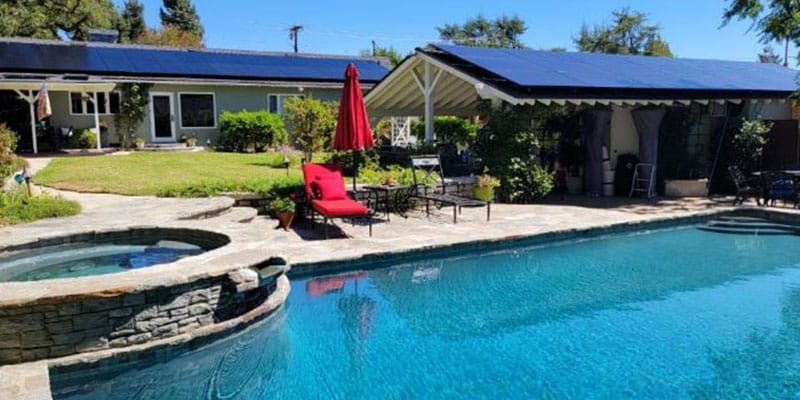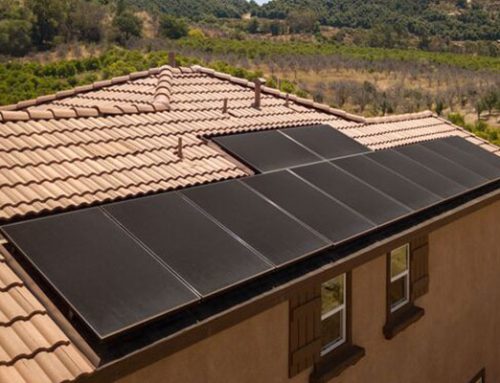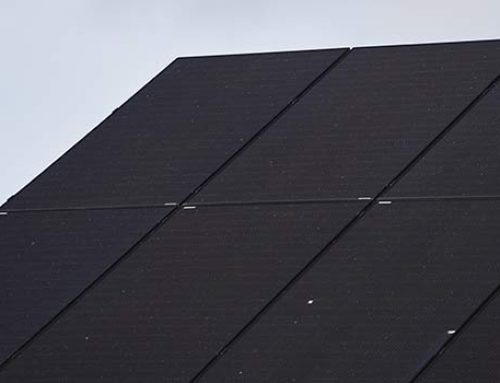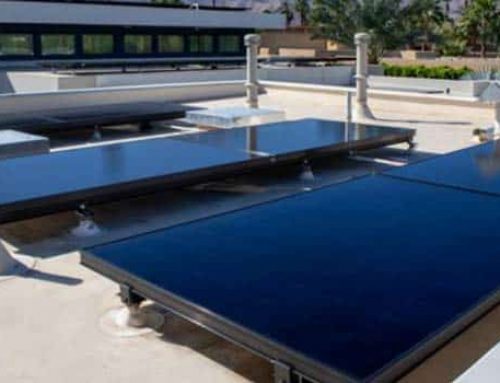Are you looking to slash your next power bill, avoid the pain of rising energy prices, and invest in your home’s sustainability and future?
As more South Australians turn towards renewable energy, the interest in designing a solar system has skyrocketed.
This trend isn’t just about being eco-friendly; it’s a smart, cost-effective move for your wallet and the environment.
In this article, we’ll walk you through the ins and outs of designing a solar system tailored for your Adelaide home. This decision isn’t just about slapping some panels on your roof; there’s an art and science to it.
To help you plan the process from start to finish, we’ll cover:
- A brief overview of renewable energy
- Understanding your home’s energy needs
- Solar components
- Solar setup (step-by-step)
- Average cost breakdowns
From understanding your energy needs to selecting the right components, we’ll guide you through each step. We’ll also share some pro tips that can make the difference between a good solar system and a great one.
By the end of this read, you’ll have a clear roadmap on how to design a solar system that suits your home’s needs, maximises efficiency, and optimises financial returns.
Let’s get right into it.
Solar Power: An Overview
We’re referring to a setup that converts sunlight into electricity, typically using photovoltaic (PV) panels.
This system not only includes solar panels but also involves inverters, battery storage, and a monitoring system to keep track of energy production and usage.
With a home solar system, you’ll have the potential to enjoy the following benefits:
- Reduced Electricity Bills: Panels generate ‘free’ electricity as they convert sunlight into energy, meaning you draw less power from the grid and save money in the process.
- Eco-Friendly Energy Source: Renewable power is a clean, green renewable energy source. It reduces the reliance on fossil fuels, decreasing carbon emissions and contributing to a healthier environment.
- Increased Property Value: These homes have been found to have increased property values. They are often more attractive to prospective buyers who appreciate the lower utility costs and environmental benefits.
- Energy Independence: You become less dependent on traditional power sources and more self-sufficient in your energy needs. This is particularly beneficial during power outages or times of peak demand when electricity prices spike.
- Government Incentives: The Australian government offers various incentives for solar installation, such as Small-scale Technology Certificates (STCs) and feed-in tariffs for surplus energy fed back into the grid.
- Adaptability and Scalability: They can be designed to suit various house sizes and energy needs. They can also be scaled up in the future if your energy needs increase.
Tailoring Solar to Your Space: Understanding Home Needs
Let’s break down how to assess your home’s requirements and the tools and resources that can aid in this process.
Assessing Your Home’s Potential
- Roof Space and Orientation: North-facing roofs in Australia capture the most sunlight. However, east or west-facing roofs can also be viable. The roof’s pitch and shading from trees or nearby structures also play a role.
- Energy Consumption Patterns: Look at your energy bills to determine your average consumption. This will help in sizing your solar system to meet your needs effectively.
- Future Energy Needs: Consider any anticipated changes, like a growing family or plans to purchase an electric vehicle, which could increase your future energy needs.
By thoroughly understanding your home’s unique needs, you can design a solar system that not only fits your property but also optimises your investment.
Solar System Components
Here’s a detailed explanation of the essential components, along with brand and type recommendations, and tips on sourcing quality components locally.
- Solar Panels: At the heart of your system, panels convert sunlight into electricity. Monocrystalline panels, known for their efficiency and longevity, are a popular choice in Australia. Brands like SunPower are well-regarded for their quality and performance.
- Inverter: The inverter converts the direct current (DC) from your panels into alternating current (AC) used in your home. For residential systems, string inverters (like those from SMA and Fronius) or microinverters (like Enphase) are common. Microinverters are ideal for roofs with partial shading.
- Battery Storage: Batteries store excess renewable energy for use when the sun isn’t shining. Consider lithium-ion batteries for their efficiency and compact size. Tesla’s Powerwall and LG Chem are leading choices.
- Mounting System: This secures the panels to your roof. Ensure it’s compatible with your roofing material and designed for durability. Brands like IronRidge and Unirac are noted for their robust mounting systems.
- Monitoring System: This allows you to track your system’s performance and energy production. Most inverters come with integrated monitoring solutions, but standalone systems offer detailed insights.
Sourcing Quality Components Locally
- Local Retailers: Adelaide boasts numerous reputable retailers. Opt for ones that are Clean Energy Council (CEC) accredited, as they adhere to strict standards.
- Manufacturer Warranties: Choose components with strong manufacturer warranties. This not only ensures product reliability but also offers peace of mind.
- Local Reviews and Testimonials: Research and read reviews from other Adelaide residents. Their experiences can provide valuable insights into the performance and durability of various brands and components.
- Ask for Recommendations: Solar installers in Adelaide can often recommend the best components for your specific needs and local conditions. Their experience in the field is invaluable.
- Attend Local Expos: These events are great for seeing different products firsthand and talking directly with suppliers and experts.
By carefully selecting each component and sourcing them from reputable local providers, you can ensure that your solar system is not just a source of clean energy, but also a wise long-term investment for your Adelaide home.
Solar Setup: A Step-by-Step Installation Guide
Step One: Plan and Design Your System
- Assess Your Needs: Based on your energy consumption and roof assessment, plan the size and layout.
- Get Permits: Ensure all necessary permits are acquired from local Adelaide authorities.
Step Two: Choose Quality Components
- Select Components: Based on your research and professional advice, purchase the panels, inverter, battery system, mounting equipment, and monitoring system.
Step Three: Mounting the Panels
- Safety First: Use proper safety equipment when working on the roof, including harnesses and non-slip footwear.
- Mounting System Installation: Install the mounting system ensuring it’s securely attached and structurally sound. This step is often best left to professionals due to the complexities and risks involved.
Step Four: Install the Solar Panels
- Panel Placement: Attach the panels to the mounting system, taking care not to damage the panels or your roof.
- Wiring: Connect the panels to the inverter. This step involves electrical work and is best handled by a certified electrician.
Step Five: Inverter and Battery Installation
- Location: The inverter should be installed in a cool, shaded area to operate efficiently.
- Battery Safety: If installing a battery system, ensure it’s in a well-ventilated area due to heat generation and potential gas emissions.
Step Six: Connect to the Grid
- Professional Help: Connecting your solar system to the grid must be done by a licensed electrician or solar installer.
Step Seven: Final Inspection and Testing
- Compliance Check: Have a certified professional inspect the installation to ensure it meets all safety and compliance standards.
- System Testing: Once approved, test the system to ensure it operates correctly.
Common Solar Panel Problems (And How to Fix Them)
Step Eight: Ongoing Maintenance
- Regular Checks: Regularly check for and clear any debris or dirt from your panels.
- Professional Maintenance: Schedule annual inspections with a professional to maintain system efficiency and safety.
BONUS: Safety Precautions and Best Practices
- Electricity Safety: Always turn off the main power when working with electrical components.
- Roof Safety: Use fall protection and work with a buddy for roof installations.
- Compliance: Adhere to all local Adelaide building and electrical codes.
How Much Does a Residential Solar System Cost?
| Component | Average Cost | Notes |
|---|---|---|
| Solar Panels | $2,500 – $7,000 | Depends on size and type |
| Inverter | $1,000 – $2,000 | Varies with system size and type |
| Battery Storage | $3,000 – $12,000 | Optional, depends on capacity |
| Installation | $1,500 – $5,000 | Varies based on system complexity |
| Permits & Inspections | $100 – $500 | May vary by location |
| Total | $8,100 – $26,500 | Excluding potential rebates and incentives |
Financial Incentives and Subsidies
- Small-scale Renewable Energy Scheme (SRES) Offers Small-scale Technology Certificates (STCs) which can be sold to offset installation costs. Learn more about SRES.
- State-Based Incentives: South Australia offers additional subsidies, especially for battery systems.
- Feed-in Tariffs: You can get credited for excess electricity sent back to the grid.
Budgeting and Cost-Saving Tips
- Size Appropriately: Don’t oversize your system. Match it to your energy needs to avoid unnecessary costs.
- Monitor Energy Usage: Use your solar system’s monitoring tool to track energy production and usage, helping you optimise your consumption and reduce costs.
- Maintenance: Regular maintenance can extend the lifespan of your system, ensuring better long-term returns.
- Finance Options: Explore financing options like green loans or solar leasing programs which can make the initial investment more manageable.
By carefully navigating the financial aspects of solar installation, including leveraging available incentives, you can make renewable power a cost-effective solution for your Adelaide home.
Ready to Shine? Contact Energy Buster Today!
If you’re feeling inspired to take the next step towards renewable energy but need a little more guidance, Energy Buster is here to help.
We offer:
- Personalised Advice: Every home is unique, and so are your energy needs. Our team is dedicated to providing you with personalised advice, ensuring that your solar system is perfectly tailored to your home.
- Custom Quotes: Curious about the costs? Contact us for a custom quote. We’ll consider your specific requirements and provide a detailed breakdown, so you know exactly what to expect.
- Expert Insights: With our expertise, we can answer all your questions and guide you through every step of the process, from initial planning to final installation.






